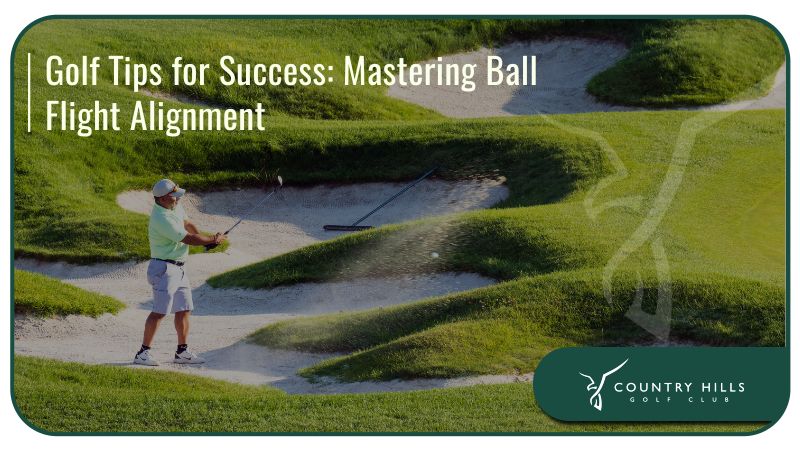
Mastering ball flight alignment is essential for golf success, emphasizing the significance of understanding the dynamics between club path and face angle for straight, draw, or fade shots. This article from Country Hills Golf Club breaks down the key elements needed for each shot type: a straight shot requires a square club face along the target line, a draw needs a club path out to the left with a closed face for left-handed golfers, and a fade demands a rightward path with an open face. Through practice and awareness of swing mechanics, golfers can achieve greater shot consistency and precision.
Golf is a game of precision and strategy, where the ability to control the ball's flight path can set you apart. A fundamental grasp of how and why your ball travels in a particular direction is crucial for making informed adjustments and improving your overall game. At Country Hills Golf Club, we're committed to equipping our golfers with the knowledge and skills necessary to master their ball flight alignment.
Our philosophy at Country Hills Golf Club centers around a holistic understanding of golf mechanics. By comprehending the relationship between club path and face angle, golfers can intentionally shape their shots to navigate the course strategically. This article aims to demystify the principles of ball flight alignment, empowering golfers to execute their shots with confidence and precision.
The Dynamics of Ball Flight
Understanding why your ball flies in a specific direction is the first step towards mastery. The flight of the ball is primarily determined by the club's path at impact and the orientation of the clubface. These factors work in tandem to influence the ball's trajectory and movement through the air.
Achieving a Straight Shot
For a straight ball flight, the goal is to have your club path travel down the target line with a square club face at impact. This alignment promotes a direct trajectory towards your target, minimizing lateral movement and maximizing accuracy.
Mastering the Draw
A draw, characterized by left to right movement for left-handed golfers, requires the club path to travel out to the left of the target with the face angle directed towards the target. The key here is that the club face is closed relative to the path, imparting a spin that curves the ball towards the target.
Executing the Perfect Fade
Conversely, a fade, which moves right to left for left-handed golfers, is achieved when the club path travels to the right of the target with the face angle pointed towards the target. The club face should be open relative to the path, creating a gentle curve back towards the target.
Understanding Ball Flight Alignment
To control your ball flight effectively, it's essential to practice and become familiar with the feel of different club paths and face angles. Experimentation on the range, combined with a keen awareness of your swing mechanics, will lead to more consistent and predictable shot outcomes. Remember, small adjustments can have significant impacts on your ball's flight path, so patience and perseverance are key.
At Country Hills Golf Club, we believe that a comprehensive understanding of ball flight dynamics forms the basis of a successful golf game. By mastering the relationship between club path and face angle, golfers can unlock the ability to shape their shots intentionally, navigating the course with strategy and skill. Whether you're aiming for a straight, draw, or fade, the principles outlined in this article provide a foundation for refining your ball flight alignment and taking your game to the next level. If you're wanting golfing lessons or to sign up for an annual membership, click here to fill out the form. See you on the course!
Written on behalf of Country Hills Golf Club.
FAQs
Yes, even small tweaks to your club path or face angle can significantly affect the trajectory and curve of your ball flight.
The direction is primarily influenced by the club's path at impact and the orientation of the clubface relative to that path.
Practice on the range, focusing on the feel of different club paths and face angles, and observe how these adjustments influence your shots.
